Eco-Friendly Litter Box for Rabbit: Options for Owners!
Explore eco-friendly rabbit litter box options that are better for the environment and safe for your bunny. Green choices for pet owners.
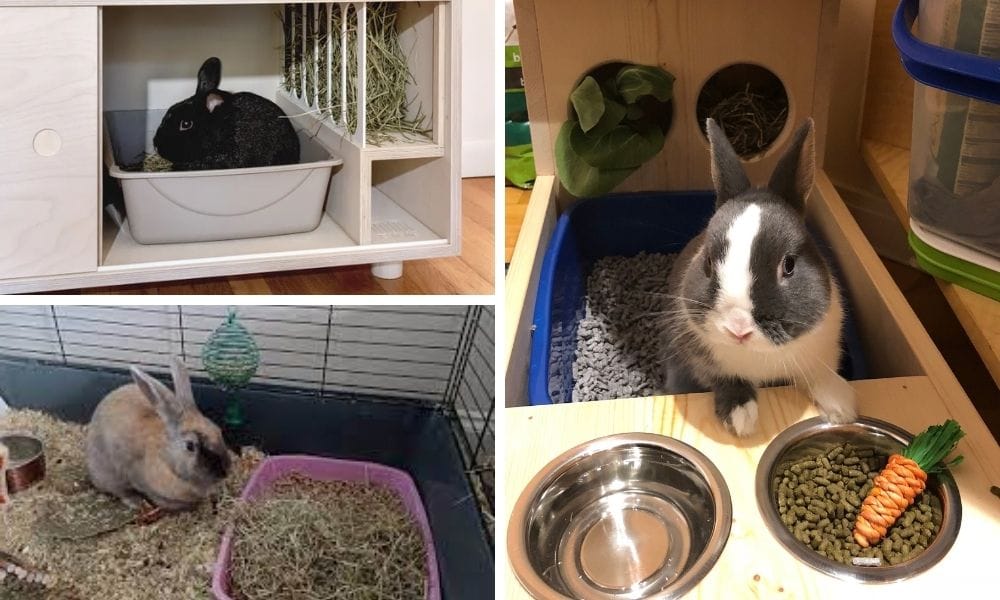
Key Takeaways:
- Discover the benefits of eco-friendly litter boxes for your pet rabbit.
- Learn about different types of sustainable materials used in rabbit litter boxes.
- Understand how to choose and maintain an eco-friendly litter box for your bunny.
Rabbits are delightful pets, known for their playful nature and adorable antics. As a bunny parent, ensuring their comfort while maintaining an eco-friendly home can be a challenge, especially when it comes to choosing the right litter box. This comprehensive guide explores various eco-friendly litter box options that are not only better for the environment but also for your rabbit's health.
Understanding the Importance of Eco-Friendly Litter Boxes
Traditional cat litter boxes and cat litter are often not suitable for rabbits due to the different nature of their waste and potential health hazards. Rabbits require a litter box that can handle their unique bathroom habits, including their need to eat hay while doing their business. Eco-friendly litter boxes made from sustainable materials not only help reduce environmental impact but also ensure that your rabbit is not exposed to harmful chemicals.
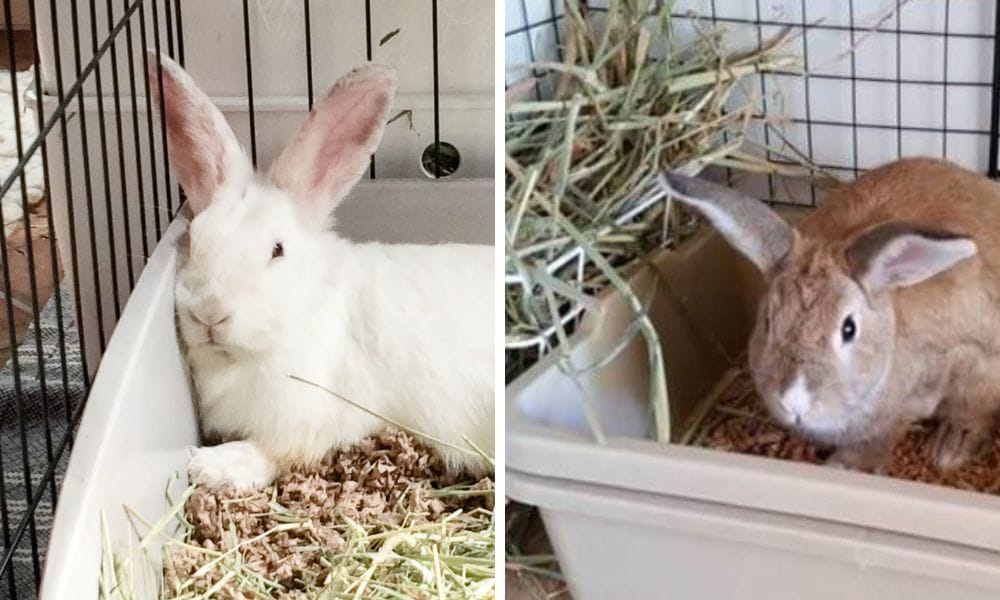
Types of Eco-Friendly Litter Materials
Paper-Based Litter
Paper litter, including paper pellets and shredded paper, is a popular choice among rabbit owners for pet rabbits. It’s highly absorbent, controls odor well, and is gentle on rabbit’s feet, which is crucial to prevent sore hocks. Suitable for the health and comfort of pet rabbits, paper bedding is also easy to clean and can be composted, making it an excellent option for environmentally conscious bunny parents.
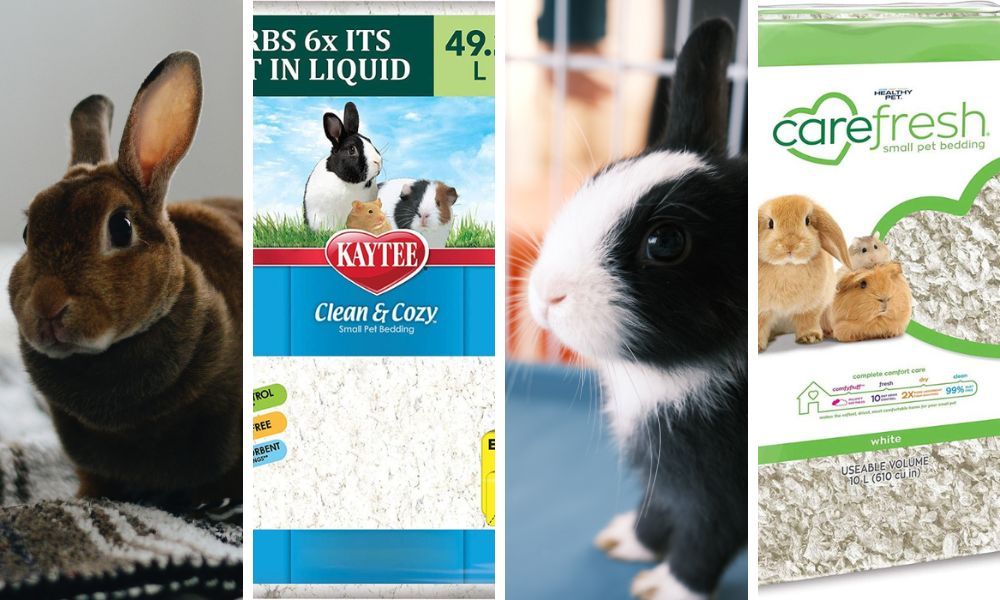
Wood Pellets
Wood pellets are another sustainable option for rabbit litter. They are made from compressed sawdust and are free from chemicals and additives, making them safe for rabbits. Wood pellets are highly absorbent, help control odor, and are biodegradable. When used in a bunny litter box, they can be easily disposed of in a compost heap or used as mulch in your garden.
Choosing the Right Litter Box
Size and Design
When selecting a litter box for your rabbit, size matters. Ensure the litter box is spacious enough to comfortably fit your rabbit and allow them room to dig and move around. Many bunny owners prefer a covered litter box to help contain the litter and provide their rabbits with a sense of security. However, make sure the cover is high enough to not restrict your rabbit’s movements.
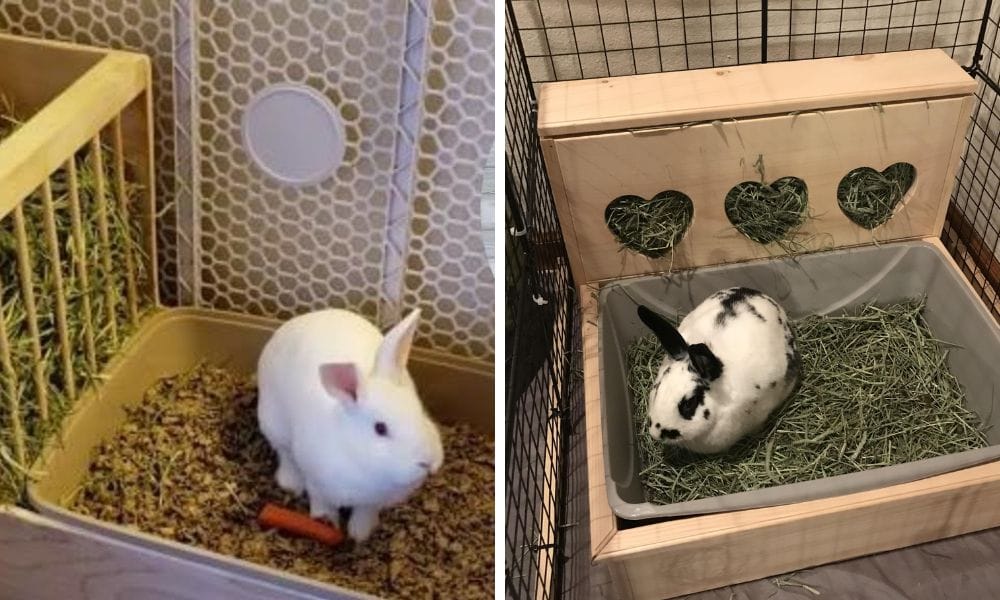
Innovative Litter Box Training Techniques for Rabbits
When introducing a litter box to your pet rabbit, starting with the right approach can make all the difference. Begin by placing the litter box in your rabbit’s favorite corner where they usually do their business. Rabbits tend to choose a specific spot for elimination, so observing their habits can guide you to the ideal placement. Use a gentle encouragement method by placing some of their droppings into the new litter box, which helps them recognize the box as their new bathroom spot. This method is super easy and often leads to successful litter box training without causing stress to your bunny.
Continuing the training, consistency is key. Ensure the litter box is always clean and accessible, making it as inviting as possible for your rabbit. You might consider using paper-based litter or wood pellets, which are both excellent at controlling odor and are easy to clean. Regularly replacing the litter and wiping down the box prevents the buildup of ammonia and keeps the area fresh, reducing the chance of respiratory issues in your pet. Remember, patience is crucial; some rabbits take to litter training quickly, while others may need a few weeks to fully adapt. To effectively litter train your rabbit, emphasizing the importance of patience and consistency throughout the litter training process is essential.
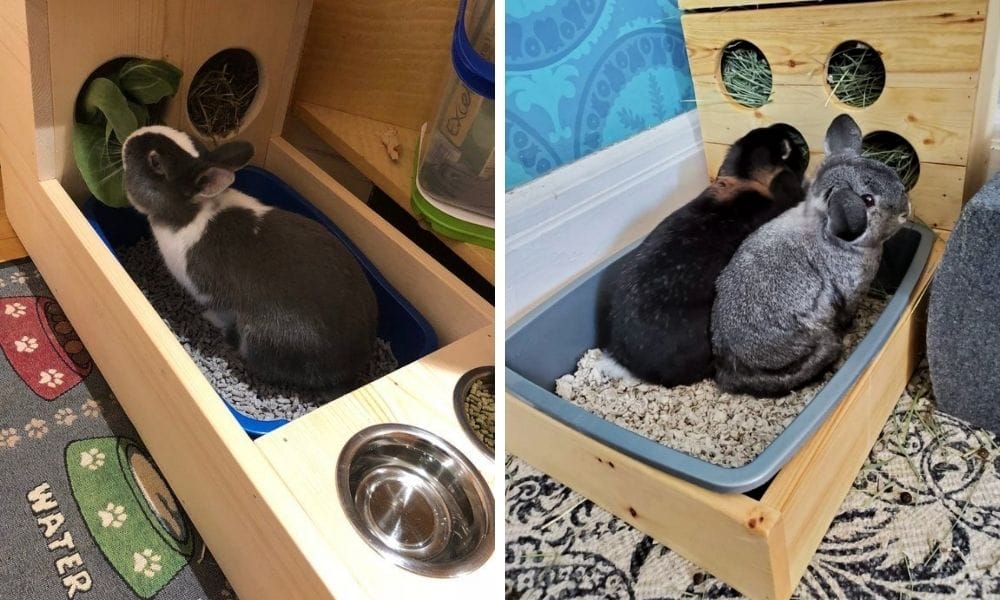
Optimizing Litter Box Placement for Rabbit Comfort
When setting up a litter box for your rabbit, placement is crucial for ensuring they feel secure and are willing to use it. Rabbits often prefer quiet corners that provide a sense of safety while they do their business. Ideally, the litter box should be placed away from their feeding area to help them distinguish between their eating and bathroom spaces. This separation is vital in maintaining hygiene within the enclosure and can significantly reduce the chances of bacterial growth and odor.
Moreover, consider the accessibility of the litter box. Rabbits, especially older ones or those with mobility issues, benefit from litter boxes that are easy to enter and exit. A low-sided litter box can be very helpful, and placing it near their favorite corner can encourage use. Ensuring the litter box is in a spot that doesn't require too much hopping or climbing can make it more inviting for your bunny, making litter box training super easy and less stressful for both of you.
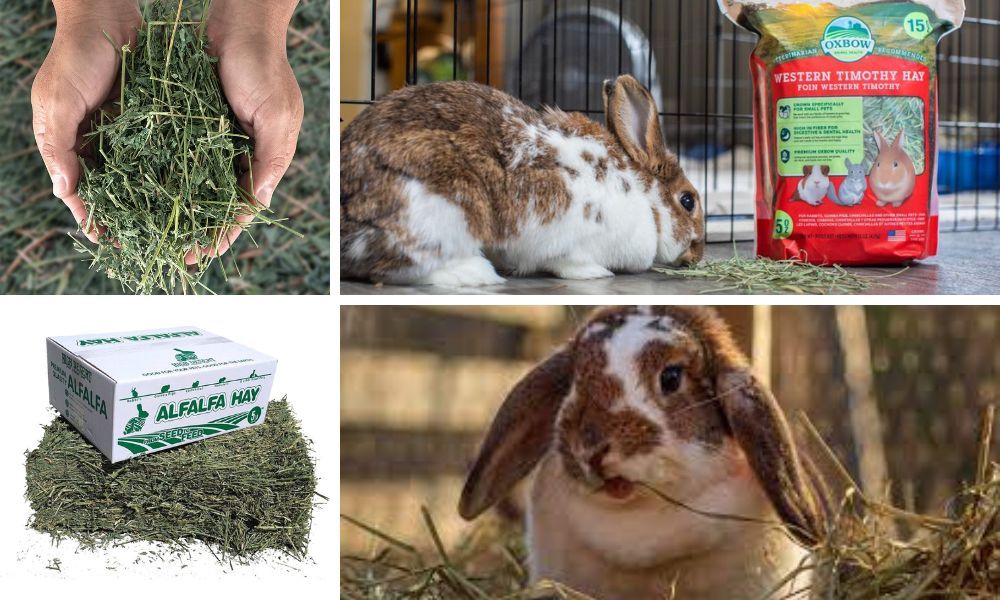
The Role of Litter Material in Rabbit Health
Choosing the right litter material is not just about odor control or ease of cleaning; it’s also about ensuring the health and well-being of your pet rabbit and other small animals. Paper-based litter, such as paper pellets or shredded paper, is highly recommended because it is soft, absorbent, and virtually dust-free. This minimizes the risk of respiratory issues, which rabbits and other small animals like guinea pigs, chinchillas, and ferrets are prone to when exposed to dusty environments. For example you could use the pellets in their litter tray and use fleece blankets elsewhere.
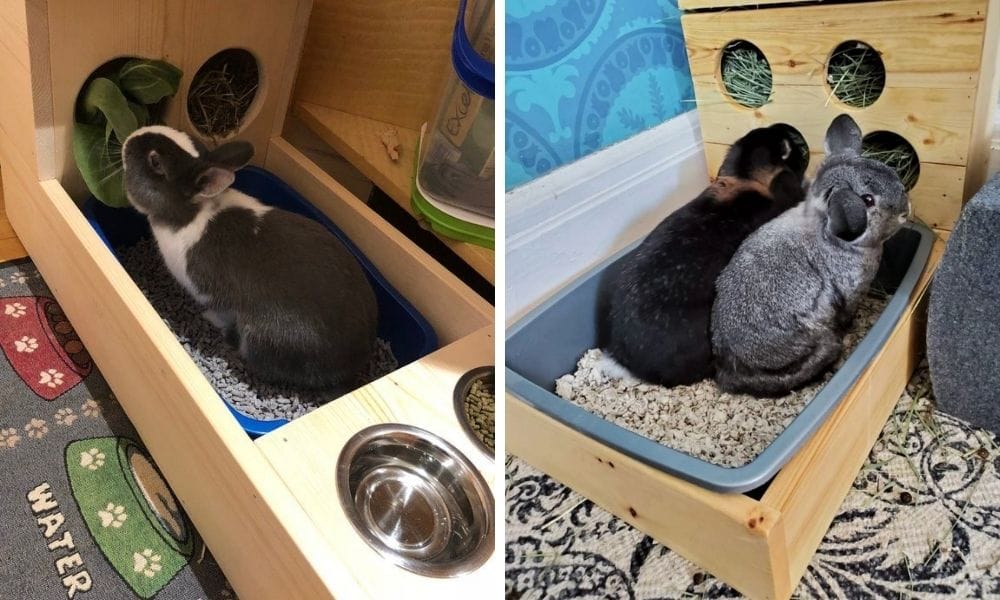
Creating a Multi-Litter Box Setup for Multiple Rabbits
For rabbit owners with multiple bunnies, managing litter habits can be challenging but rewarding. Implementing multiple boxes throughout the enclosure ensures that each rabbit has enough room and opportunities to use a clean litter box without competition. This setup not only helps in maintaining hygiene but also reduces conflicts among rabbits over territory. Each box should be strategically placed in different corners to catch any urine or feces, preventing any single area from becoming overly soiled, which can be detrimental to the health of your rabbits.
Moreover, when setting up multiple litter boxes, it’s essential to consider the individual preferences of each rabbit. Some might prefer covered litter boxes for privacy, while others might opt for an open pan. Observing your rabbits’ behavior towards different types of boxes can help you tailor the environment to suit their needs better. This personalized approach helps in faster adaptation and lessens the likelihood of inappropriate elimination outside the litter boxes. Always ensure there is a generous layer of litter to soak up urine and minimize smell, making the living space pleasant for both the rabbits and the owner. It's also crucial to consider the specific needs of different small animal species, including rabbits, when setting up multiple litter boxes, ensuring the chosen options are suitable for each.
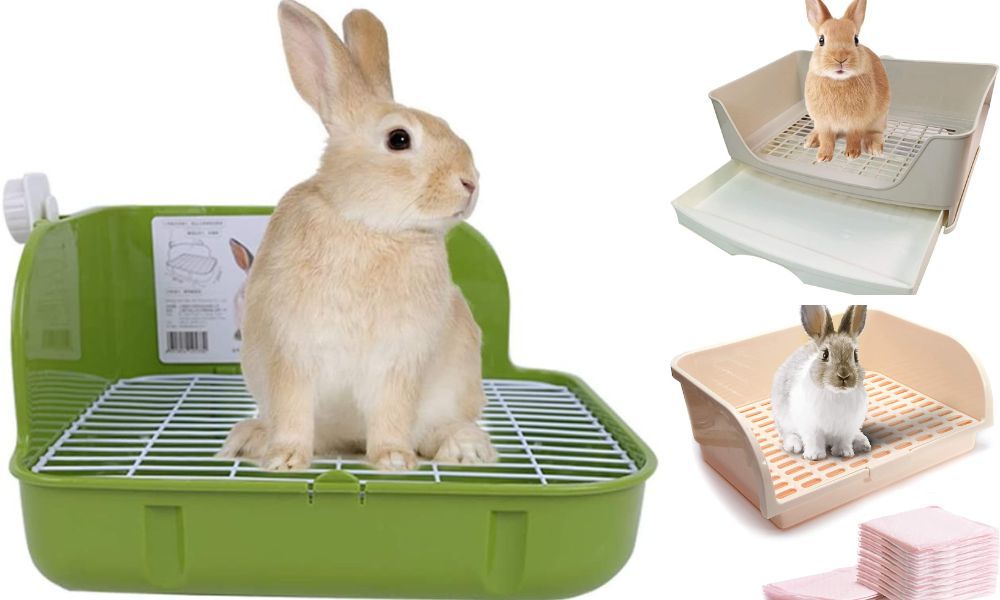
Placement and Accessibility
Rabbits tend to choose a favorite corner in their enclosure to use as a bathroom. Observing your rabbit's habits can help you determine the best place to put the litter box. It should be easily accessible and placed in a quiet corner to provide privacy. Multiple boxes might be necessary if you have more than one rabbit or a particularly large enclosure.
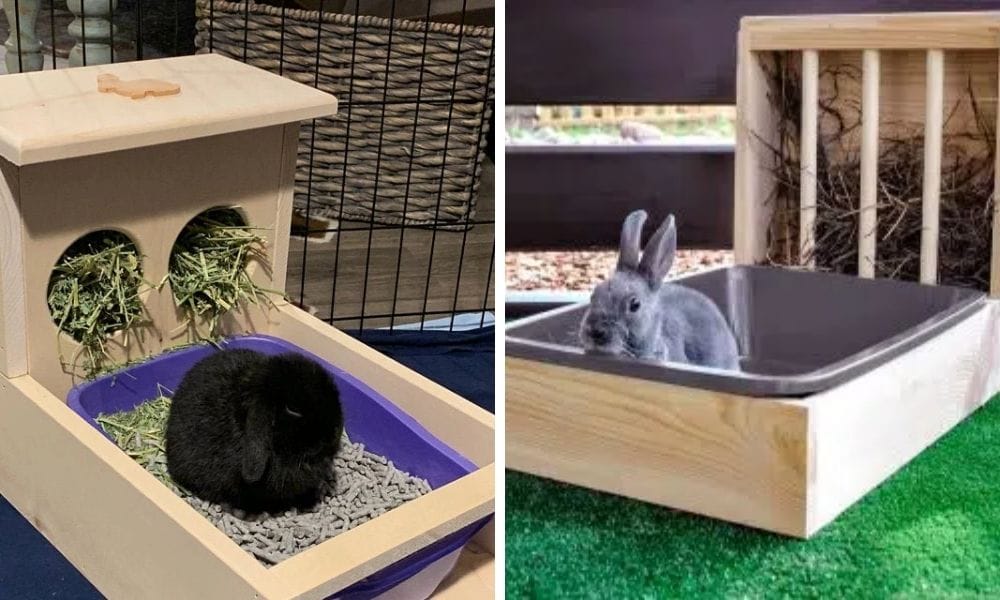
Maintaining an Eco-Friendly Litter Box
Regular Cleaning
Keeping the litter box clean is essential for your rabbit's health and helps minimize odors. Remove soiled litter daily and provide a full litter change at least once a week. Regular cleaning also prevents the buildup of ammonia from urine, which can cause respiratory issues in rabbits.
Composting Rabbit Waste
One of the significant advantages of using eco-friendly litter materials like paper pellets or wood pellets is that they can be composted along with rabbit droppings. Composting is a natural process that turns waste into nutrient-rich soil, perfect for gardening. Not only does this practice reduce waste, but it also returns valuable nutrients to the earth.
Summary
Choosing an eco-friendly litter box for your rabbit is a step towards a more sustainable and healthy lifestyle for both you and your pet. By selecting the right materials and maintaining proper hygiene, you can provide a safe, comfortable area for your rabbit to do their business while contributing positively to the environment. Remember, a happy bunny is a healthy bunny!
FAQ
What is the best type of eco-friendly litter material for rabbits?
Paper pellets and wood pellets are among the best eco-friendly litter materials for rabbits. They are absorbent, easy to clean, and biodegradable, making them both pet-friendly and environmentally friendly.
How often should I clean my rabbit's litter box?
It's best to remove soiled litter daily and perform a complete litter change at least once a week. Regular cleaning prevents the buildup of harmful bacteria and keeps your rabbit's living space fresh and clean.
Can rabbit litter be composted?
Yes, rabbit litter made from natural materials like paper or wood pellets can be composted along with rabbit droppings. This eco-friendly practice helps reduce waste and provides nutrient-rich compost for gardening purposes.

